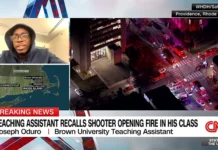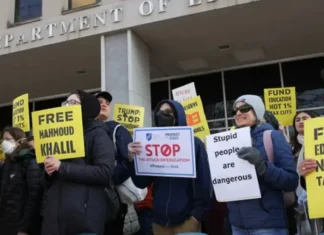
By Emilyann Franklin, The Seattle Medium
“Wrong color.”
This is a comment many Black cosplayers, including Jamila, aka BlackBettieCosplays, have seen under one of their posts on social media.
Cosplay is the act of dressing up as a fictional character. The practice has been around since the 15th century carnivals, and the term was coined in the 1980s. Cosplay has become its own world, with cosplayers spending hundreds of dollars on a single cosplay.
According to the Global Opportunity Analysis and Industry Forecast, the global cosplay market was valued at $4.62 billion in 2020. Many cosplayers make their own cosplays, spending hundreds of hours sewing clothes, sculpting foam armor, and styling wigs.
A couple of decades ago, liking geeky things like cosplay was considered uncool, but now it has become more mainstream with tens of thousands of cosplayers going to conventions every year. There are many different types of conventions for everyone, including comics, anime, and gaming. Cosplay is supposed to be for everyone. Unfortunately, that isn’t always the case.

Jamila (she/they/him) has been a part-time cosplayer for over 15 years, starting in the early 2000s. However, because of the “rules and expectations,” they quit until the 2010s.
The rules? Black cosplayers could only cosplay Black characters. “You should look like your character,” Jamila was told, mostly online through comments on social media, Reddit threads, anywhere people had anonymity. General media, such as news outlets, showcase cosplayers they think look the most like the character.
“They’re not going to include a short Captain America. They’re not going to include a Black Sailor Moon. They’re not going to include a plus-sized person cosplaying a skinny character. They aren’t going to do it.” Jamila explains. These articles are the first way many people are introduced to cosplay, so those images take root.
This perpetuates both online troll behavior and aspiring Black cosplayers’ insecurities about cosplaying non-Black characters.
“Media shows the less healthy version of cosplay,” Jamila says. If you go to a convention, real-life people are of all shapes and sizes, but many non-cosplay-specific news outlets create unrealistic expectations of the community.’

Jared McGruder (he/him), aka NightSkinCosplays, who has been cosplaying for four years says there is a “superiority complex” within the cosplay community. If people perceive someone’s cosplay is better, or more accurate, they are more popular in the community. “The more popular people are typically Caucasian” Jared says.
There is also a lack of representation in the entertainment industry. Dr. Timeka Tounsel (she/her), has a doctorate in Communication Studies and is an assistant professor of Black Studies in Communication at the University of Washington. Black people are “not represented for how much they exist, and white people are overrepresented,” she says.
Tounsel explains that Black creators are not given good enough platforms. In Hollywood, there is a discrepancy in budgets. White people creating predominantly white movies get higher budgets. This is important because the “media helps us understand how the world works or should be” she says. This lack of representation creates a lack of empathy towards Black people.
Not only does representation create empathy outside Black communities, but it also affects Black people on an individual level. Representation creates inspiration, and the feeling they matter. People want to see themselves on TV.
Not seeing yourself, “It makes you not want to cosplay people,” Jared says.
Black cosplayers have been trying to change this mentality for years. For example, 28 Days of Black Cosplay, created by Princess Mentality Cosplay, showcases Black cosplayers for the month of February to raise awareness. The hashtag #28daysofblackcosplay was created to boost Black cosplayers on social media, to give them more visibility and tell other Black cosplayers that they are not alone.

Many Black cosplayers, including Jamila, have just started cosplaying whatever they want in spite of the comments they get. A girl at a convention told Jamila seeing them cosplay a non-Black character gives them hope.
Jamila created BIPOC Vamp Day because of the lack of representation in horror. It is an annual fundraiser for sickle cell anemia that attempts to make people feel more comfortable and confident in their identity. The website showcases many BIPOC creators, including cosplayers, artists, and photographers, as well as their vampire inspired works.















